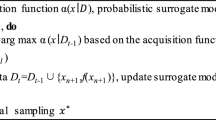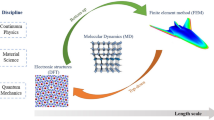Abstract
A large batch of mass-produced components, represented by architectural steel structure joint spheres, is influenced by the upstream processing technology level, making it difficult to maintain the position and dimensions of the groove assembly within the standard size range. This results in the inability to use the same process parameters and welding strategy for all weld joints during welding. For components with significant groove size errors, a U-shaped residual network (U-ResNet) was established and employed to segment laser stripe images at the grooves and effectively extract feature data. Subsequently, based on the groove’s position and size information, an established prediction model was used to adaptively output process parameters. Finally, validation experiments were conducted on actual components. The range of variation in the height dimension of the joint sphere’s circumferential weld seam was within 2 mm, with no unfused defects. The entire welding process took 20 min, meeting the requirements for industrial on-site production.








Similar content being viewed by others
Data Availability
Data available on request from the authors.
References
Xu Y, Wang Z (2021) Visual sensing technologies in robotic welding: recent research developments and future interests. Sens Actuators, A 320:112551. https://doi.org/10.1016/j.sna.2021.112551
Lei T, Huang Y, Shao W, Liu W, Rong Y (2020) A tactual weld seam tracking method in super narrow gap of thick plates. Robot Comput-Integr Manuf 62:101864. https://doi.org/10.1016/j.rcim.2019.101864
Baek D, Moon HS, Park SH (2017) Development of an automatic orbital welding system with robust weaving width control and a seam-tracking function for narrow grooves. Int J Adv Manuf Technol 93(1):767–777. https://doi.org/10.1007/s00170-017-0562-0
Wenji L, Zhenyu G, Xiao J, Li L, Jianfeng Y (2019) Research on the seam tracking of narrow gap P-GMAW based on arc sound sensing. Sens Actuators, A 292:205–216. https://doi.org/10.1016/j.sna.2019.04.015
Zhu J, Wang J, Su N, Xu G, Yang M (2017) An infrared visual sensing detection approach for swing arc narrow gap weld deviation. J Mater Process Technol 243:258–268. https://doi.org/10.1016/j.jmatprotec.2016.12.029
Wu K, Wang T, He J, Liu Y, Jia Z (2020) Autonomous seam recognition and feature extraction for multi-pass welding based on laser stripe edge guidance network. Int J Adv Manuf Technol 111(9):2719–2731. https://doi.org/10.1007/s00170-020-06246-1
Chen S, Liu J, Chen B, Suo X (2022) Universal fillet weld joint recognition and positioning for robot welding using structured light. Robot Comput-Integr Manuf 74:102279. https://doi.org/10.1016/j.rcim.2021.102279
Muhammad J, Altun H, Abo-Serie E (2018) A robust butt welding seam finding technique for intelligent robotic welding system using active laser vision. Int J Adv Manuf Technol 94(1):13–29. https://doi.org/10.1007/s00170-016-9481-8
Wang N, Zhong K, Shi X, Zhang X (2020) A robust weld seam recognition method under heavy noise based on structured-light vision. Robot Comput-Integr Manuf 61:101821. https://doi.org/10.1016/j.rcim.2019.101821
Xiao R, Xu Y, Hou Z, Chen C, Chen S (2019) An adaptive feature extraction algorithm for multiple typical seam tracking based on vision sensor in robotic arc welding. Sens Actuators, A 297:111533. https://doi.org/10.1016/j.sna.2019.111533
Zou Y, Chen T, Chen X, Li J (2022) Robotic seam tracking system combining convolution filter and deep reinforcement learning. Mech Syst Signal Process 165:108372. https://doi.org/10.1016/j.ymssp.2021.108372
Xu F, Zhang H, Xiao R, Hou Z, Chen S (2022) Autonomous weld seam tracking under strong noise based on feature-supervised tracker-driven generative adversarial network. J Manuf Process 74:151–167. https://doi.org/10.1016/j.jmapro.2021.12.004
Fabry C, Pittner A, Rethmeier M (2018) Design of neural network arc sensor for gap width detection in automated narrow gap GMAW. Weld World 62(4):819–830. https://doi.org/10.1007/s40194-018-0584-8
Wang W, Shi Y, Li C, Gu Y (2023) Feature information extraction method for narrow gap U-type groove based on laser vision. 104:257–272. https://doi.org/10.1016/j.jmapro.2023.08.053
Yu R, Kershaw J, Wang P, Zhang YM (2021) Real-time recognition of arc weld pool using image segmentation network. 72:159–167. https://doi.org/10.1016/j.jmapro.2021.10.019
Funding
This work was supported by Excellent Doctoral Program of Natural Science Foundation of Gansu Province of China (22JR5RA239), National Natural Science Foundation of China (#52005237), Major Science and Technology Project of Gansu Province of China (22ZD6GA008), and Zhejiang Provincial Natural Science Foundation of China under Grant (LQ21E050023).
Author information
Authors and Affiliations
Corresponding author
Additional information
Publisher's Note
Springer Nature remains neutral with regard to jurisdictional claims in published maps and institutional affiliations.
Recommended for publication by Commission XII - Arc Welding Processes and Production Systems.
Rights and permissions
Springer Nature or its licensor (e.g. a society or other partner) holds exclusive rights to this article under a publishing agreement with the author(s) or other rightsholder(s); author self-archiving of the accepted manuscript version of this article is solely governed by the terms of such publishing agreement and applicable law.
About this article
Cite this article
Wang, W., Shi, Y., Li, C. et al. An adaptive welding method for grooves with position and size errors. Weld World 68, 755–764 (2024). https://doi.org/10.1007/s40194-023-01629-w
Received:
Accepted:
Published:
Issue Date:
DOI: https://doi.org/10.1007/s40194-023-01629-w




